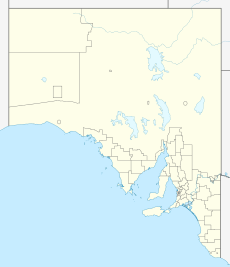Pigface Island Conservation Park facts for kids
Quick facts for kids Pigface Island Conservation ParkSouth Australia |
|
|---|---|
|
IUCN Category Ia (Strict Nature Reserve)
|
|
| Nearest town or city | Streaky Bay |
| Established | 2 May 1968 |
| Area | 16 ha (40 acres) |
| Visitation | 'very few visitors' (in 2006) |
| Managing authorities | Department of Environment, Water and Natural Resources |
| See also | Protected areas of South Australia |
Pigface Island Conservation Park is a special protected area in South Australia. It is located on Pigface Island, which is found in Streaky Bay. This bay is on the west coast of the Eyre Peninsula. The park is about 13 kilometers (8 miles) north-north-east of the town of Streaky Bay.
Contents
About Pigface Island Conservation Park
Pigface Island Conservation Park was officially created in 1972. It was set up under the National Parks and Wildlife Act 1972. The main reason for creating this park was to protect a safe place for seabirds. This island is a perfect spot for them to rest and raise their young.
History of the Park's Protection
Before it became a conservation park, the land on Pigface Island was already protected. On May 2, 1968, it was named a Fauna Conservation Reserve. This meant it was a special place set aside to help protect animals.
In 1980, experts described the island's importance. They said it was a small island used by silvergulls and black-faced cormorants. These birds use the island as a place to breed. Other seabirds also use it for resting and finding food.
Protecting Nature: IUCN Category Ia
Pigface Island Conservation Park is classified as an IUCN Category Ia protected area. IUCN stands for the International Union for Conservation of Nature. Category Ia means it is a "Strict Nature Reserve."
This is the highest level of protection. It means the area is kept as wild and untouched as possible. Human visits are usually very limited. This helps to protect the natural environment and its wildlife without much disturbance.
National Recognition
In 1980, Pigface Island Conservation Park was listed on the former Register of the National Estate. This register was a list of places in Australia that were important for their natural or cultural heritage. Being on this list showed that the park was recognized as a valuable natural site.


